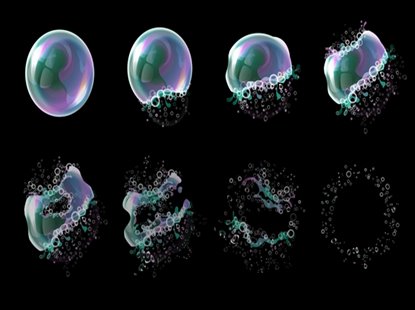How Defoamers Are Used to Prevent Foam in Food and Beverage Production
How Defoamers Are Used to Prevent Foam in Food and Beverage Production
Blog Article
The Role of Defoamers in Enhancing Product Quality and Efficiency
Defoamers serve as crucial additives that reduce this concern, ensuring smoother production operations while boosting the aesthetic and functional qualities of the final products. The option of the suitable defoamer can be critical to accomplishing ideal outcomes, raising essential concerns about solution compatibility and performance metrics that merit further exploration.
Recognizing Defoamers
Understanding the function of defoamers is vital for preserving item quality across various industries. Defoamers are chemical ingredients created to protect against the formation and minimize of foam in liquid systems, which can adversely affect procedures such as blending, loading, and surface area tension. Frothing can bring about inefficiencies, product flaws, and jeopardized aesthetic charm, making defoamers an important part in manufacturing operations.
In industrial applications, defoamers help to improve item uniformity and security. In the paint and finishings sector, foam can interfere with the application process and the last surface. Similarly, in food and beverage manufacturing, excessive foam can hinder bottling and product packaging effectiveness (defoamers). The effective usage of defoamers not just guarantees smoother manufacturing processes yet also adds to superior product performance.
In addition, the selection and formulation of a defoamer should straighten with certain application requirements, such as compatibility with various other active ingredients, effectiveness under varying temperature level and pH conditions, and possible regulative constraints. Ultimately, understanding defoamers' features and their importance in different solutions is essential for maximizing production and making sure the best quality end items.
Kinds Of Defoamers
Defoamers can be classified into numerous kinds based upon their make-up and device of activity. The key kinds include silicone-based, non-silicone organic, and not natural defoamers.
Silicone-based defoamers are among one of the most efficient, mainly due to their capability to spread swiftly on the fluid surface and interrupt foam development. Their one-of-a-kind chemical framework allows for superior stability, making them appropriate for high-temperature applications and atmospheres with varying pH degrees.
Non-silicone natural defoamers, usually composed of fatty acids or all-natural oils, are valued for their biodegradability and reduced poisoning. These are normally used in food and drink applications where safety and environmental influence are critical.
Not natural defoamers, that include compounds like talc or calcium carbonate, act by boosting the thickness of the liquid, consequently minimizing foam stability. They are commonly used in industrial processes where compatibility with other products is not a problem.
Each kind of defoamer has distinctive benefits and restrictions, permitting for tailored options depending upon the certain lathering concerns experienced in numerous applications. Comprehending these differences is vital for maximizing performance and attaining wanted item high quality.
Applications Throughout Industries
Countless markets take advantage of defoamers to improve product quality and operational effectiveness. In the food and drink industry, defoamers are vital in procedures such as developing and dairy production to avoid foam development, which can lead to ineffectiveness and item inconsistency. By controlling foam, suppliers can ensure better return and a much more uniform product.
In the pharmaceutical industry, defoamers play a crucial duty in the solution of liquid drugs, where extreme foam can hinder blending and exact dosing. Their usage assists maintain the integrity of the formulas and promotes smoother production procedures.
The paint her response and layers market also depends on defoamers to boost the performance of products throughout application. By decreasing foam, these ingredients ensure a smoother surface and boost the aesthetic high qualities of the last product.

Benefits of Utilizing Defoamers
While the application of defoamers differs throughout industries, their benefits consistently improve item top quality and procedure performance. One his response substantial benefit is the reduction of foam development throughout producing processes, which can or else bring about manufacturing delays and disparities in item top quality. By reducing foam, defoamers enable a smoother circulation of products, facilitating a lot more effective procedures and minimizing the possibility of equipment malfunctions.
In addition, the usage of defoamers can improve the look and appearance of final items. In fields such as layers, paints, and food handling, excessive foam can endanger the visual aesthetics and general top quality, while the suitable defoamer application makes certain a consistent finish and preferable features. In addition, defoamers can add to cost savings by lowering waste during manufacturing and optimizing the usage of raw materials (defoamers).

Selecting the Right Defoamer
Selecting the right defoamer is crucial for maximizing manufacturing procedures and ensuring product top quality. The selection of defoamer affects not only the performance of foam control but additionally the general performance features of the end product. Aspects to take into consideration include the sort of application, the chemistry of the formula, and the environmental conditions under which the item will certainly be used.
Different markets might need certain defoamer kinds, such as silicone-based, natural, or polymeric defoamers. Understanding the compatibility of the defoamer with the main components is necessary to Recommended Reading avoid adverse reactions that might endanger product stability. Furthermore, the defoamer's efficiency in various temperature levels and pH levels must be evaluated to ensure constant performance.
Testing the defoamer in small-scale applications can provide beneficial understandings into its performance and suitability. Factor to consider of governing compliance, specifically in food, pharmaceuticals, and cosmetics, is vital in picking a defoamer. Ultimately, an extensive evaluation of these aspects will certainly result in the option of a defoamer that not only manages foam effectively yet likewise boosts the high quality and performance of the last product.
Verdict

In final thought, defoamers are vital additives that considerably boost item top quality and performance throughout different markets. The critical option and application of defoamers lead to set you back financial savings, maximized resource usage, and boosted consumer satisfaction.
Foaming can lead to inadequacies, item problems, and compromised visual charm, making defoamers a crucial element in making operations.

Report this page